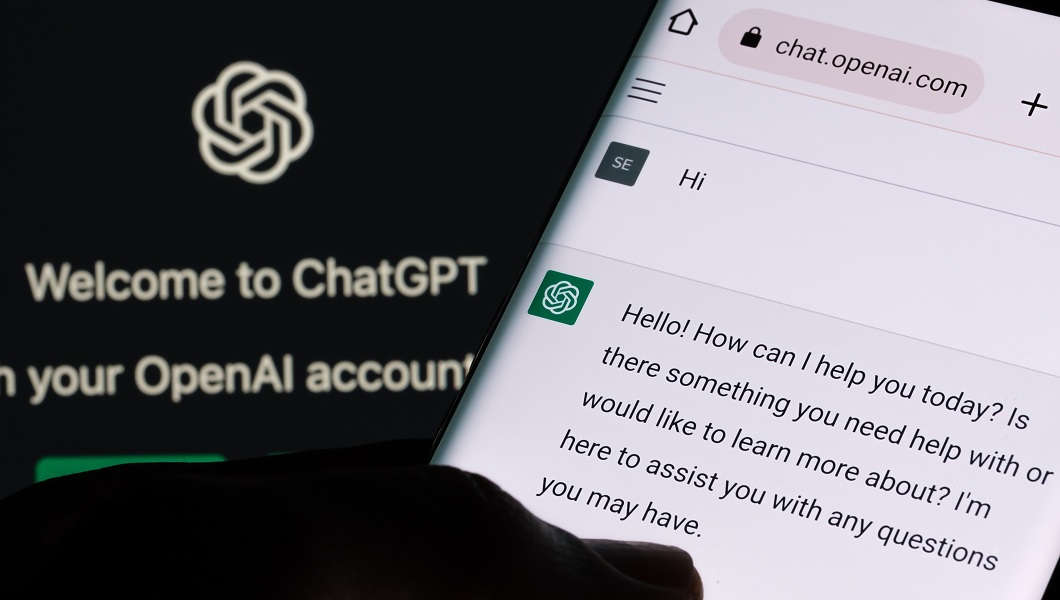
AI in internal communications: the end of us all?
Do we need to fear for our jobs or our industry with the rise of ever-smarter AI language models and design programmes? 44’s Nick Robbins, with a little help, dives into the future of AI in internal communications.
It’s likely that whatever industry you work in, artificial intelligence (AI) is already playing some role in your business. From automating processes to speeding up customer service through chatbots, its functions might already be helping your employees work more efficiently. But what’s the role for AI in internal communications?
Telling stories to your audiences about how and where it’s being deployed may have been your primary engagement with AI up to this point. And some employees might see glowing internal news stories about the rise of AI as an existential threat to their role and view the tech with suspicion. So that, like all things, needs handling with care.
But now, with the emergence of ChatGPT (Generative Pre-trained Transformer), there’s been a slew of media coverage about how AI-generated copy and imagery could soon leave journalists, programmers and, perhaps even internal communications professionals, out of jobs.
But are the doom-laden prophecies true? Or is there actually a role for AI in internal communications, and what does the current state of the tech tell us about how our audiences respond to our content?
Is there a role for AI in internal communications?
Yes, and that’s at least in some part because we simply don’t know what AI, and language models in particular, could be capable of in the months and years to come.
I’d recommend having a play with ChatGPT and entering some prompts. If you’re stuck for an idea, want to workshop a headline or need ideas for a series of blog posts or articles, then it might be another option in your arsenal, though certainly below drawing on the expertise of your colleagues or other internal communications professionals.
As The Guardian suggests, one use is as an alternative to a search engine – it basically functions as a text assistant, answering (or at least attempting to answer) your question. It’s worth keeping an eye on developments in this space too, as Microsoft’s Bing is looking to incorporate ChatGPT into its search function in a move seen as a challenge to Google.
Plausible untruths
And here’s the rub: the chatbot learns from a vast amount of information that’s already on the web, and it gets ‘smarter’ the more it’s used and the more users input data. But what appears to be happening is that the technology is becoming more plausible rather than more accurate. That’s a hugely important distinction.
And it could lead to plausible truths being shared if the outputs from ChatGPT are left unchecked and unchallenged.
So, for tasks such as quick reference translation or solving objective maths problems (and let’s be honest, how often are we doing the latter in our internal communications roles?), you can at least check an answer. But for everything else, well… your better-than-AI ability to understand context, work within ethical frameworks and weave nuance into your communications in a timely way should steer you right for now.
Is this the end of humans in internal communications?
No, because AI can’t know your business and your audience as well as you do. It can’t understand the complexities and nuances of your channels and local issues. If we take Engaging For Success’s four enablers for employee engagement – strategic narrative, engaging managers, employee voice and organisational integrity – it’s difficult to see exactly where AI (currently, we must add) can support.
It also raises some serious ethical questions too. When we talk about the employee voice and two-way communications, it would seem slightly disingenuous, if not downright immoral, to have the voice that’s feeding back AI-generated.
Just for fun, I prompted ChatGPT to weigh in on this issue and it returned the following:
“ChatGPT and other AI language models do not have the ability to understand the context or meaning behind the words they generate. They also do not have the ability to understand the needs and motivations of the people involved in the communication. As such, they may not be able to fully replicate the nuance and effectiveness of human-generated internal communications.”
However, it does go on to say that AI language models could support internal communications activities by generating draft emails and documents, or providing suggestions for language or tone.
Sound far-fetched? Well, you’re probably already using some form of AI in your day-to-day job anyway – think Outlook’s auto-generated reply templates or Word’s autocomplete suggestions.
The danger of plausibility
Of course, as internal communications specialists, we need to understand how our audiences are engaging with and understanding what we are producing.
There’s a wealth of material on Karl Weick’s concept of sensemaking – how people make sense of their organisational environment. Weick himself distilled sensemaking into core principles, including the idea of plausibility over accuracy. To paraphrase, he believed that when people are trying to make sense of new information, they will latch onto the first plausible explanation or theory rather than wait for the most accurate one.
Given that our role as internal communications professionals is to best help our audiences make sense of often complex messaging, what we do needs to be quick, accurate and can control the message before misinformation, rumour or gossip creates a plausible but inaccurate explanation.
Has AI in internal communications changed anything yet? Perhaps not, but it’s a growing trend that we need to be alive to. With the rise of technology like ChatGPT, which can output entirely plausible copy on any given subject in a matter of seconds, that might just make the role of internal communications even more important – and even harder for us to control too.
We’ve picked out AI as one of our internal communications trends of 2023 – keep an eye on our website in the coming weeks as we reveal more things we’re looking out for this year. And if you’d like to continue the conversation with us directly, feel free to drop us a line!



